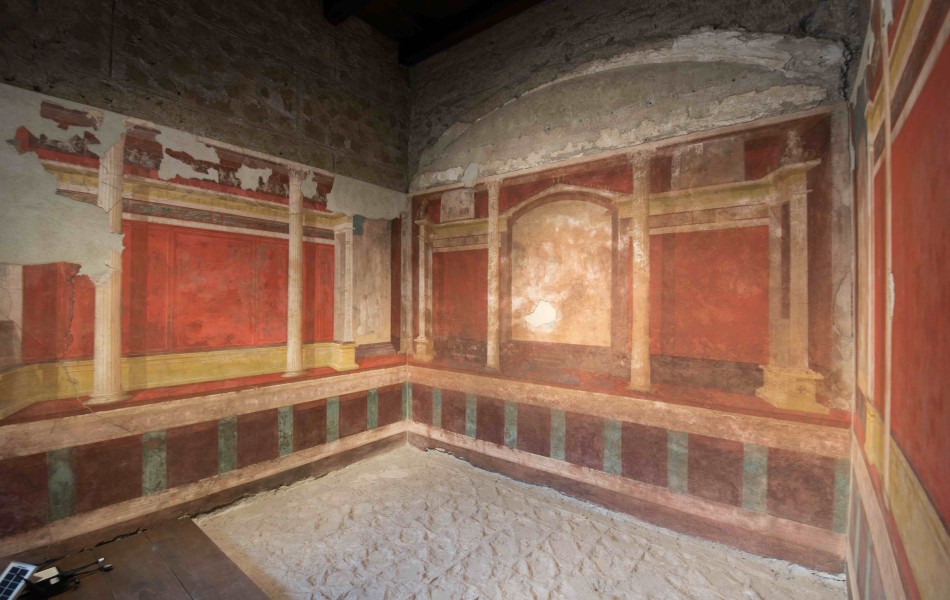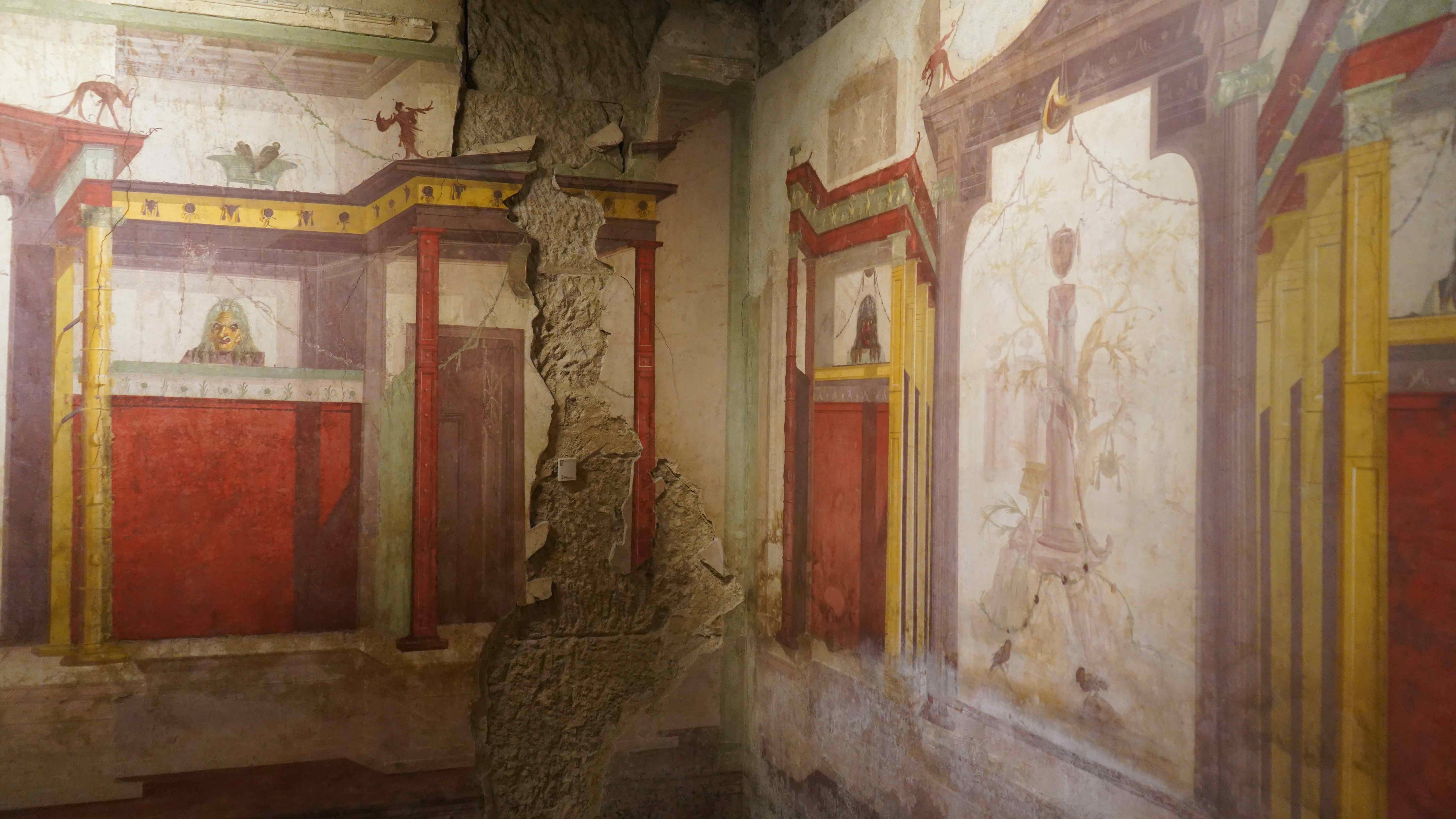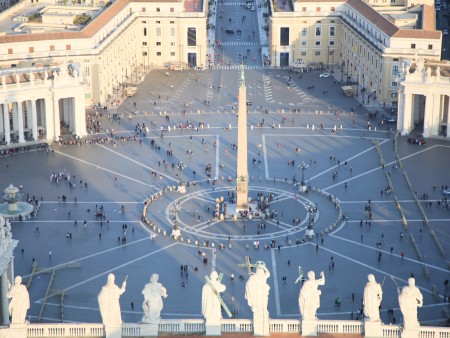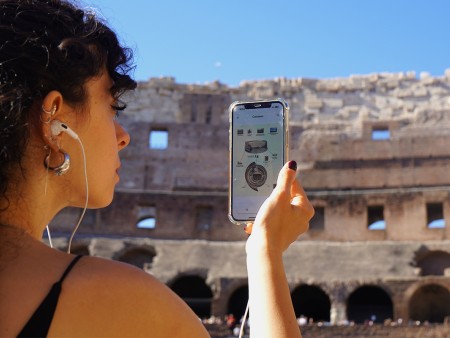The House of Augustus on the Palatine: Strategies of Power
Learn more about the historical context, structure and symbolism of the House of Augustus, and discover the values of the new imperial order

14 May 2025
Rome Travel GuideThe Foundations of Power: Rome and Augustus at the Turning Point of an Era
The history of the House of Augustus is closely linked to the extraordinary life of Augustus himself, a figure whose legacy changed the course of the ancient world. Born as Gaius Octavius Thurinus, Augustus emerged from the tumultuous final years of the Roman Republic to become the first emperor. Through a series of political alliances, victories on the battlefield, and astute reforms, he managed to bring peace after decades of internal conflict, ushering in an era that historians call the Pax Romana, a period of relative serenity and prosperity that lasted for over two centuries. His ability to navigate the complexities of Roman politics and to be recognized as a unifying force is proof of his unparalleled leadership and strategic acumen.
The House of Augustus was built at a crucial moment in Roman history, reflecting both the emperor’s personal taste and the broader cultural changes of his time. Archaeological evidence suggests that its construction took place shortly after Augustus's rise to power, probably between the end of the 1st century BCE and the early years of the 1st century CE, during a period in which Rome was redefining its identity. After years of political instability and civil wars, the city was entering a new phase: from the center of the Republic to the capital of an empire that aspired to be solid, orderly, and harmonious. This transformation was also reflected in the urban fabric, which was beginning to be characterized by a growing building impulse aimed both at renewal and at celebrating the emerging authority.
The House of Augustus is one of the hidden treasures included in the Colosseum Super Sites located in the archaeological area of the Colosseum, Roman Forum and Palatine Hill, or in the Rome Super Sites, located only in the Roman Forum and Palatine Hill, as linked in the articles.
The House of Augustus between the Huts of Romulus and the Temple of Apollo
In this context, the residence of Augustus stands as a significant example of how domestic architecture could express political and cultural ideals. Although it was not monumental in size, the house stood out for its elegance and attention to detail. The mosaic floors, high-quality wall decorations, and the skilful organization of the interior spaces reveal a vision of living that combined functionality, order, and beauty. The aesthetic promoted by Augustus, sober yet refined, is reflected in every element of the structure, which adhered to a precise ideal of moderation and composure, far from the luxurious excesses of the late Republican elite. This formal sobriety, however, was not devoid of ambition: it reflected the desire to harmonize the legacy of the past with new representational needs, at a time when Roman culture was redefining its symbolic and stylistic language.
The House of Augustus on the Palatine was therefore not only the private residence of Rome’s first emperor, but also a powerful symbol within a precise political and ideological project. Its location was chosen with great care: it stood on the south-western slope of the Palatine Hill, near the Huts of Romulus, dwellings linked to the legendary founder of Rome, and next to the majestic Temple of Apollo, built at Augustus’s behest after his victory in the Battle of Naulochus in 36 BCE against Sextus Pompey. This placement, which united the myth of origins with religious sanctity, was anything but accidental: Augustus was ideally settling in the oldest and most sacred heart of the city, where the founding memories of Roman civilization were concentrated.
With this urbanistic choice, Augustus sought to project a well-defined image of himself: not as a tyrant, but as the continuator of Romulus’s civilizing mission, the new founder of Rome, capable of restoring order and stability after years of civil wars. Moreover, the proximity to the Temple of Apollo, a deity associated with light, prophecy, and morality, reinforced the idea of a predestined emperor, protected by the gods and bearer of moral renewal. Augustan propaganda, in fact, was not limited to monuments: it spread through literature (with authors like Virgil, Horace, and Livy), art, and architecture, all coordinated tools to build a solid and shared public image.
Indeed, in an era of great change, marked by the fall of the Republic and the rise of the Empire, the legitimacy of this new political order could not rely solely on military strength. It was essential to build lasting consensus, rooted in traditional Roman values and in the collective imagination. The House of Augustus became a central element of this narrative, a place where history, myth, and power intertwined to affirm the sovereign's authority, and at the same time render him an almost sacred figure, guardian of Rome’s destiny.
Architecture and Authority: The House of Augustus as a Model of Emerging Power
From an architectural point of view, the House of Augustus is an emblematic example of the transition from the aristocratic domus of the late Republic to a more public imperial residence. Although it did not yet have the monumental dimensions that would later characterize imperial palaces, the house already reflected the dual nature of Augustus's role: on the one hand, the private princeps, a modest man in line with the traditional values of the Roman Republic; on the other, the head of state, a central figure in the new political order. The domus was divided into two distinct sections: a private area intended for the daily life of Augustus and his family, and a public space designed to host ambassadors, senators, and official delegations. This public area functioned almost like a “government palace,” while still maintaining a domestic character, marking an initial step toward the sacralization of the imperial figure.

The pictorial decoration of the rooms is particularly significant, as it not only reflects the refined taste of the patron, but also carries a strong symbolic value for the entire complex. The frescoes, executed in what we now know as the Second Pompeian Style, especially adorn the famous “Room of the Masks” and the “Room of the Perspectives.” In these halls, walls painted with illusory colonnades, fictitious architectural elements, and idealized landscapes create the illusion of open spaces and otherworldly realms, suggesting a connection between the domestic environment and the divine dimension. It is no coincidence that in some rooms one can find references to the god Apollo and to mythological figures associated with virtue and wisdom: these iconographic elements contributed to building the image of Augustus as a man inspired by the gods, wise, just, and destined to rule.
In this context, the decoration was not merely ornamentation, but a fundamental part of a visual narrative that reinforced the moral and political authority of the princeps. The house thus became a space for the representation of power, where every detail, from the layout of the rooms to the choice of pictorial motifs, served to communicate a clear message: Augustus was not a mere citizen, but the guardian of Roman order.
The Room of the Masks

The so-called "Room of the Masks" in the House of Augustus is undoubtedly one of the most fascinating and significant spaces in the entire imperial residence. This room is an extraordinary example of Roman painting from the Second Style, renowned for its perspective illusions and complex architectural representations. The walls of this room evoke the façade of a Hellenistic theatrical scene, with painted architectural elements that imitate columns, architraves, and niches. Within these fictive structures, one can see theatrical masks hanging, from which the room gets its name. At the center of each wall, there is a panel depicting a rustic sanctuary, evoking sacred landscapes and rural shrines, similar to those found in the triclinium of the House of Livia.
From a historical perspective, the "Room of the Masks" reflects Augustus's desire to legitimize his power through an association with Roman tradition and religion. The theatrical representations and rustic sanctuaries symbolize the bond between the emperor and the cultural roots of Rome, highlighting his role not only as a political leader but also as a guardian of the city's traditional and religious values. This room, along with other areas of the House of Augustus such as the "Room of the Pine Garlands," stands as an emblematic example of Augustan art and ideology, where aesthetics and politics intertwine to create an image of legitimate and sacred power.
Our categories:
You may also be interested ...

Vatican Private Tour with Sistine Chapel & St. Peter's Basilica: Renaissance’s Wonders
Private tour
Discover with a skip the line Private Vatican Tour the Sistine Chapel, Vatican Museums and St Peter’s Basilica
starting from: € 275

Colosseum Guided Audio Tour with Roman Forum and Palatine Hill
Private tour
Discover Ancient Rome’s secrets and history with our immersive Colosseum guided audio tour, rich in image and content
starting from: € 51 € 42